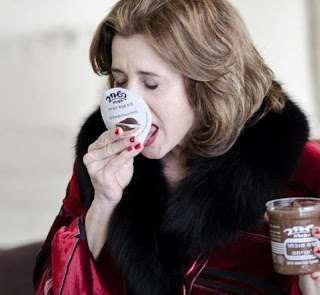The first time I saw malabi was at a youth hostel in
Jerusalem. It made an appearance on the dessert table, comfortably nestled
between what looked like green and red Jello shots. I was a little bit confused
as to what it was, because unlike the familiar, transparent and brightly
colored Jello, this treat was slightly pink and opaque, but just as “jiggly”.
My Israeli friend finished the malabi in
three spoonfuls—the fourth was given to me. I immediately fell in love (with
the dessert, not the Israeli).
Malabi is a gelatinous, milk-based dessert that is sweetened with
rose water. The texture is most similar to a thick tapioca, without the tapioca
balls. Because malabi itself is not
entirely sweet or flavorful, the rose water gives it a hint of refreshing
sweetness that leaves you reaching for another spoonful.
Malabi can be eaten alone, or with fresh condiments like coconut shavings
and peanuts. Although this flavor combination sounds strange when paired with
rose, it actually provides some texture that malabi is otherwise missing.
Children and adults enjoy this
dish alike. And fortunately, it is friendly to most allergen-sensitive eaters.
Although malabi is milk-based, the
gelatinous texture comes from rice flour, a key ingredient. For anyone who is
lactose intolerant, this dessert can also be made with water, coconut milk, or
both!
As a testament to its popularity
among all classes of diners, malabi can
be found in almost any type of Israeli neighborhood or establishment. You can
just as easily find this dessert in a brunch restaurant as you can at a street
vendor. In fact, the majority of the Middle East has a version of this dessert,
including Turkey, Lebanon, Syria, Jordan, and Egypt. Outside of Israel,
however, it is called muhallibieh.
But any version of this dessert is a treat. As they say—a rose custard by any
name is still a rose custard!
 |
| Hidden gem: A malabi stand in an alley way by Shuk HaCarmel. |
 |
| Coconut and peanut topped malabi. |
 |
| Delicious! |





